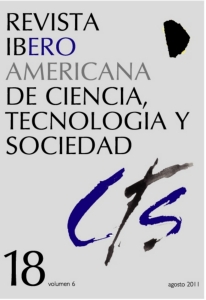Da integração das Américas a um cemitério de pipas
a construção de um projeto de inclusão digital na Favela da Maré
DOI:
https://doi.org/10.52712/issn.1850-0013-754Palavras-chave:
Favela da Maré, Rede Rio, Teoria Ator-Rede, inclusão digitalResumo
Este artigo tem como objetivo construir a história de um projeto que conectou centros de infor-mática da Maré, favela da cidade do Rio de Janeiro, à Rede Rio, rede de computadores forma-da pelas principais instituições de pesquisa do estado do Rio de Janeiro. Os laboratórios foram conectados através de links sem fio, em um movimento que configurou uma rede de atores composta pela Universidade Federal do Rio de Janeiro, pela instituição governamental cana-dense Instituto Para a Conectividade nas Américas (ICA), por organizações não-governamentais (ONG), roteadores, antenas, moradores da Maré, dentre outros. Fazendo uso da Teoria Ator-Rede, procura-se mapear as traduções que fizeram do projeto uma entidade inicialmente estabilizada, bem como as mudanças nestas traduções que desestabilizaram-no alguns poucos anos depois.
Downloads
Referências
CUKIERMAN, H. (2006): “Direitos culturais e inclusões digitais”, Proposta - Revista Trimestral de debate da FASE, Nº 109, junho, Rio de Janeiro, pp. 50-56.
CÚPULA DAS AMÉRICAS (2001ª): Declaração da Cidade de Quebec, disponível em http://www.summit-americas.org/iii_summit/iii_summit_dec_pt.pdf, acesso em 14 de junho de 2010.
CÚPULA DAS AMÉRICAS (2001b): Plano de Ação, disponível em: http://www.summit-americas.org/iii_summit/iii_summit_poa_pt.pdf, acesso em 14 de junho de 2010.
LATOUR, B. (2000): Ciência em ação: como seguir cientistas e engenheiros sociedade afora, São Paulo, Editora UNESP.
LAW, J. (1992): “Notes on the theory of the actor-network: Ordering, strategy, and heterogeneity”, Systemic Practice and Action Research, Vol. 5, Nº 4, agosto, pp. 379-393
LEMOS, R. e MARTINI, P. (2010): “LAN house: a new wave of social inclusion in Brazil”, Information Technologies & International Development, Vol. 6, Special Edition, pp. 31-35.
PLANETA COPPE (2004): Sistema desenvolvido pela COPPE leva internet de alta velocidade a comunidades carentes, disponível em http://www.planeta.coppe.ufrj.br/artigo.php?artigo=484, acesso em 1 de abril de 2010.
ROJAS, K., BOTELHO, A. J. e TÁVARA, I. (2005a): External Review of the Institute for Connectivity in the Americas: Final Report, disponível em:
http://www.idrc.ca/uploads/ user-S/11368387131Report_and_Appendix.pdf, acesso em: 13 de maio de 2010.
ROJAS, K., BOTELHO, A. J. e TÁVARA, I. (2005b): PI External Reviews: Summary of Repor, disponível em http://www.idrc.ca/uploads/user-S/12154443531Finding_PI_external_reviews_conectivity_in_the_americas.pdf, acesso em 13 de maio de 2010.
VIVA RIO (2002): Estação Futuro, disponível em http://www.vivario.org.br/publique/cgi/cgilua.exe/sys/start.htm?sid=22&infoid=58, acesso em: 13 de junho de 2010.
Downloads
Publicado
Como Citar
Edição
Seção
Licença
Copyright (c) 2024 CC Attribution 4.0

Este trabalho está licenciado sob uma licença Creative Commons Attribution 4.0 International License.
Todas os números de CTS e seus artigos individuais estão sob uma licença CC-BY.
Desde 2007, a CTS proporciona acesso livre, aberto e gratuito a todos seus conteúdos, incluídos o arquivo completo da edição quadrimestral e os diversos produtos apresentados na plataforma eletrônica. Esta decisão é baseada no entendimento de que fornecer acesso livre aos materiais publicados ajuda a ter uma maior e melhor troca de conhecimentos.
Por sua vez, em se tratando da edição quadrimestral, a revista permite aos repositórios institucionais e temáticos, bem como aos sites pessoais, o autoarquivo dos artigos na versão post-print ou versão editorial, logo após da publicação da versão definitiva de cada número e sob a condição de incorporar ao autoarquivo um link direcionado à fonte original.











